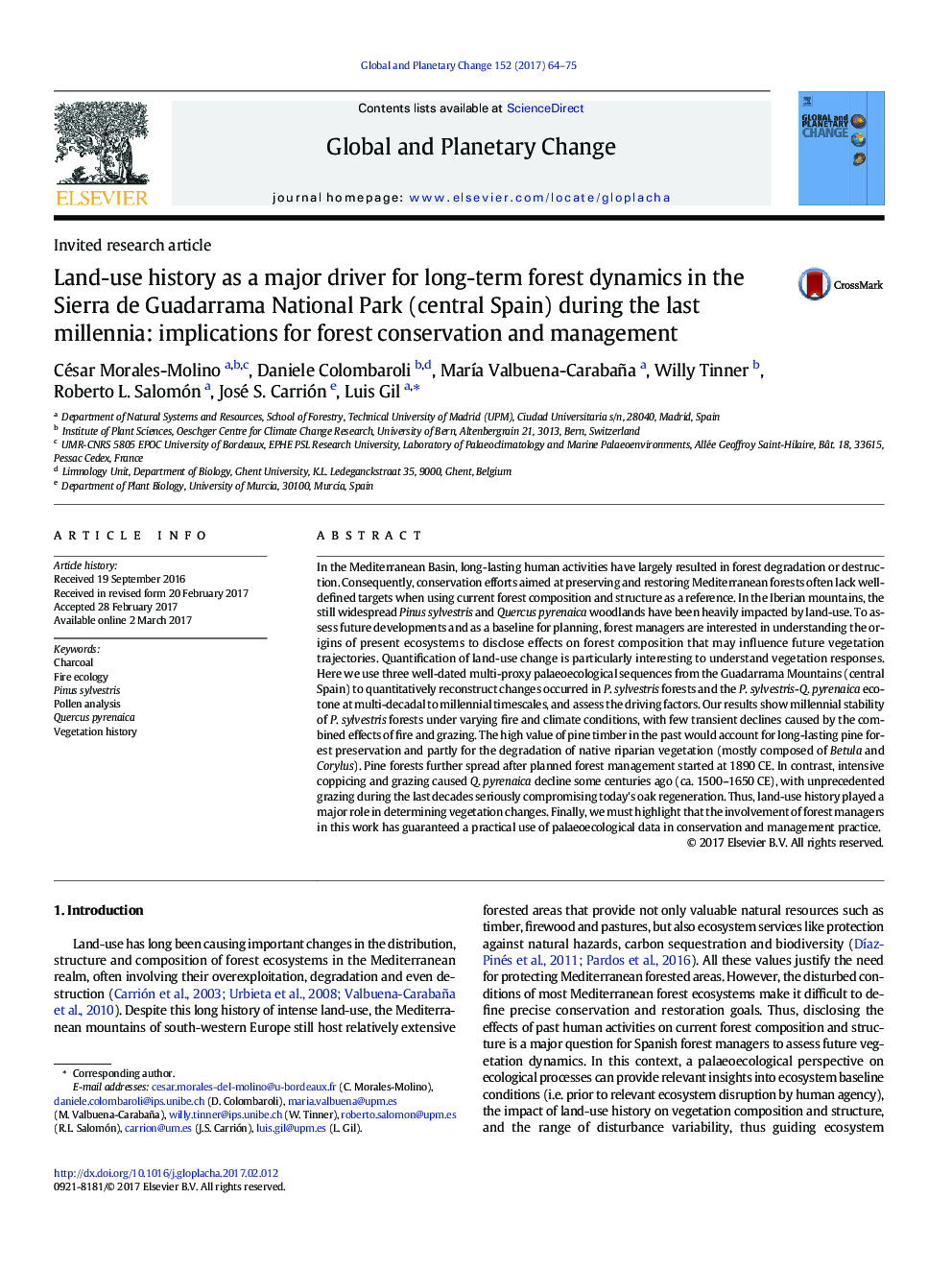| کد مقاله | کد نشریه | سال انتشار | مقاله انگلیسی | نسخه تمام متن |
|---|---|---|---|---|
| 5755334 | 1621630 | 2017 | 12 صفحه PDF | دانلود رایگان |
- We used palaeoecology to assess the impact of land-use history on Iberian forests.
- Pinus sylvestris forests were stable under varying fire and climatic conditions.
- The high value of pine timber accounted for the long-lasting pine forest preservation.
- Intensive coppicing and grazing caused Quercus pyrenaica decline some centuries ago.
- Current and future forest management will benefit from our palaeoecological insights.
In the Mediterranean Basin, long-lasting human activities have largely resulted in forest degradation or destruction. Consequently, conservation efforts aimed at preserving and restoring Mediterranean forests often lack well-defined targets when using current forest composition and structure as a reference. In the Iberian mountains, the still widespread Pinus sylvestris and Quercus pyrenaica woodlands have been heavily impacted by land-use. To assess future developments and as a baseline for planning, forest managers are interested in understanding the origins of present ecosystems to disclose effects on forest composition that may influence future vegetation trajectories. Quantification of land-use change is particularly interesting to understand vegetation responses. Here we use three well-dated multi-proxy palaeoecological sequences from the Guadarrama Mountains (central Spain) to quantitatively reconstruct changes occurred in P. sylvestris forests and the P. sylvestris-Q. pyrenaica ecotone at multi-decadal to millennial timescales, and assess the driving factors. Our results show millennial stability of P. sylvestris forests under varying fire and climate conditions, with few transient declines caused by the combined effects of fire and grazing. The high value of pine timber in the past would account for long-lasting pine forest preservation and partly for the degradation of native riparian vegetation (mostly composed of Betula and Corylus). Pine forests further spread after planned forest management started at 1890Â CE. In contrast, intensive coppicing and grazing caused Q. pyrenaica decline some centuries ago (ca. 1500-1650Â CE), with unprecedented grazing during the last decades seriously compromising today's oak regeneration. Thus, land-use history played a major role in determining vegetation changes. Finally, we must highlight that the involvement of forest managers in this work has guaranteed a practical use of palaeoecological data in conservation and management practice.
Journal: Global and Planetary Change - Volume 152, May 2017, Pages 64-75
